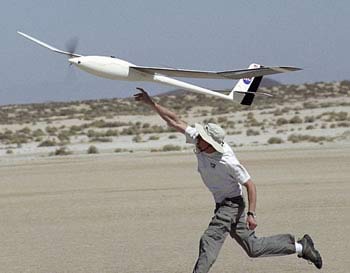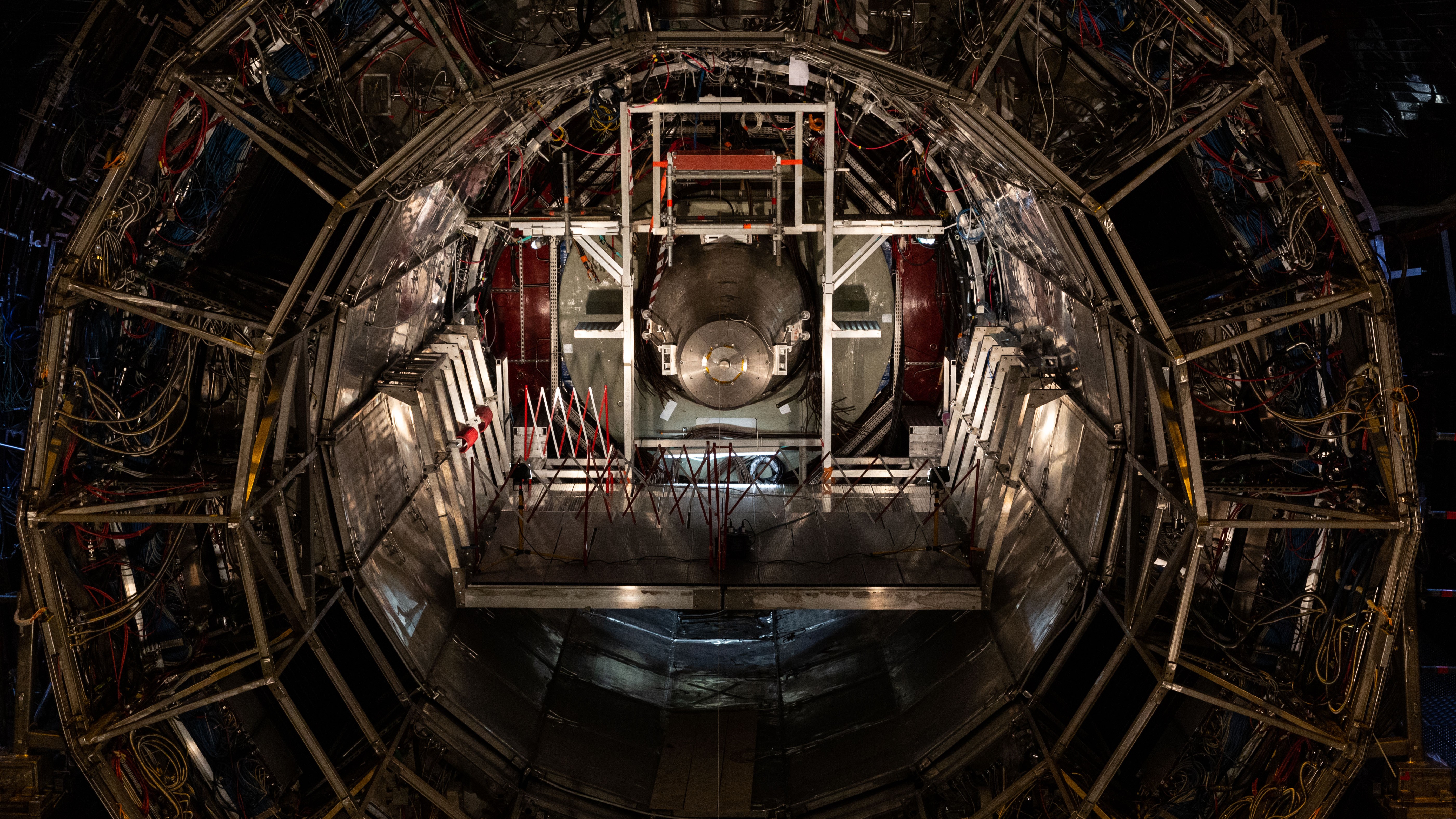Like a Hawk, Robotic Plane Rides Thermals

Hawks and eagles glide on currents of rising warm air called thermals to extend their flight time without needing more fuel. NASA aerospace engineer Michael Allen and a team of engineers working on the Autonomous Soaring Project at Dryden Flight Research Center have succeeded in extending the range of small unmanned air vehicles (UAVs) by programming them to autonomously soar on thermals.

(Michael Allen launches UAV by hand)
During the test, the software programmed into the 15-pound motor-glider's autopilot flew the aircraft on a pre-determined racetrack over the northern portion of Rogers Dry Lake at Edwards Air Force Base until it detected an updraft. Once the aircraft started to rise on the current, the engine automatically shut off and the aircraft circled to stay within the convective lift resulting from the thermal or updraft.
Did it work? According to the researchers, the small UAV added 60 minutes to its endurance by soaring autonomously. Nicknamed Cloud Swift after a bird known for feeding on insects found in rising air masses, the modified model sailplane gained an average altitude in 23 updrafts of 565 feet, and in one strong thermal ascended 2,770 feet.
"The flights demonstrated that a small UAV can mimic birds and exploit the free energy that exists in the atmosphere," Allen stated. "We have been able to gather useful and unique data on updrafts and the response of the aircraft in updrafts. This will further the technology and refine the algorithms that are used."
Science fiction writers have been using UAVs for surveillance for a generation or more. In his excellent 1980 science/fantasy novel Changeling, Roger Zelazny describes small, autonomous surveillance craft called 'tracer-birds' that were also able to detect and ride air currents:
The dark birdforms dotted the mountaintops like statues of prehistoric beasts, wings outspread. Had there been an eye to observe them, it might not even have noted their minute, tropism-like pursuit of the sun across the sky as they recharged their batteries for the night's flight. ...they stirred, almost simultaneously, as if shaken by a sudden breeze. They began to flex their wings. Soon, one by one, they dropped from the heights, caught the air, rose, found their way, found their patterns, resumed their journey... (Read more about Roger Zelazny's tracer-birds)
If you are interested in what it might feel like to be surveilled by a bird-like UAV, read about Little Bird, from Darwin's Children, a recent novel by Greg Bear.
Take a look at an extremely cool, lightweight bird-like UAV in Robotic Bird Has USAF Flocking. Read more about NASA research on extending UAV endurance. Thanks to Tariq Malik for contributing the story tip.
Sign up for the Live Science daily newsletter now
Get the world’s most fascinating discoveries delivered straight to your inbox.
(This Science Fiction in the News story used with permission from Technovelgy.com - where science meets fiction.)









